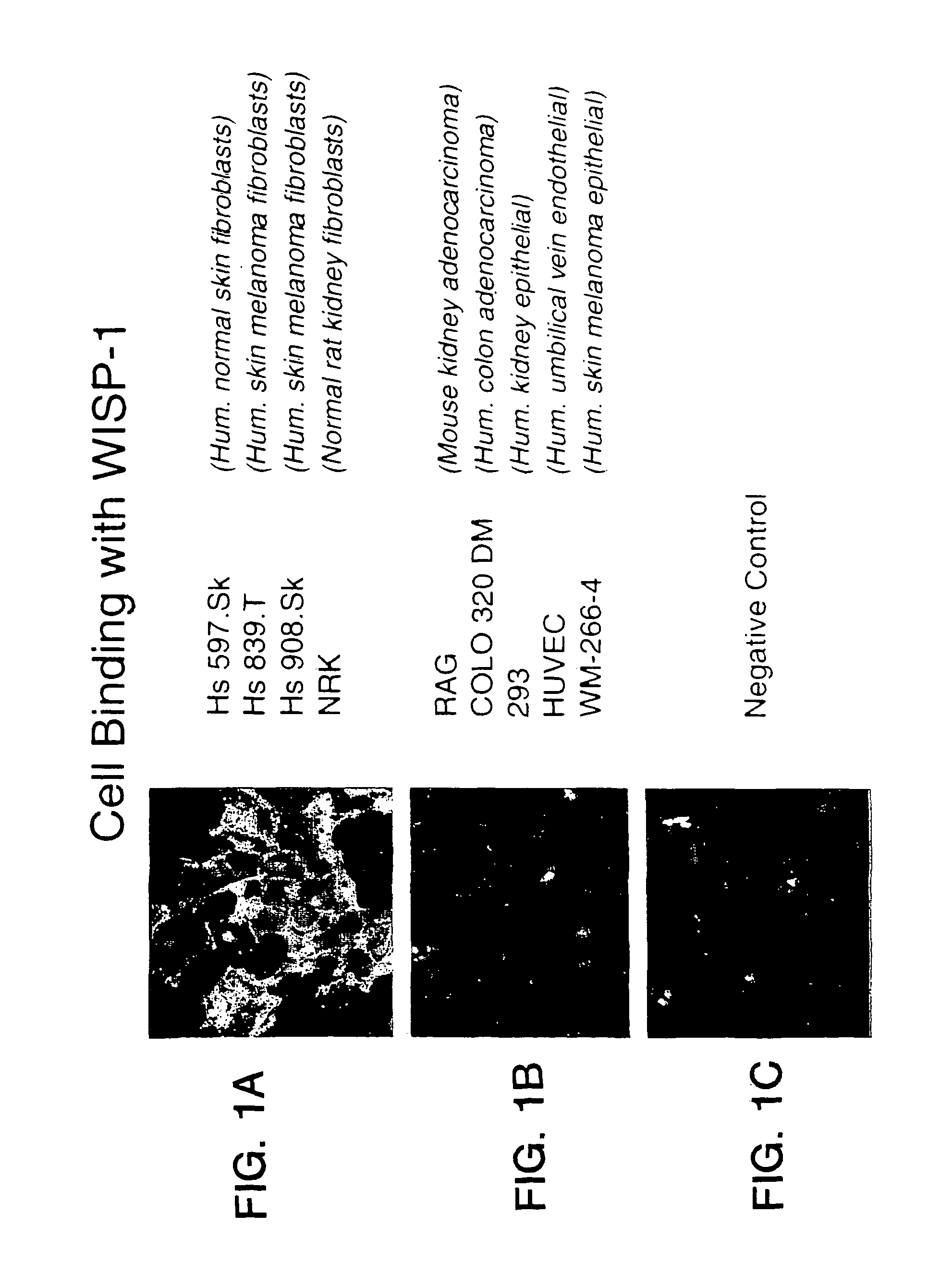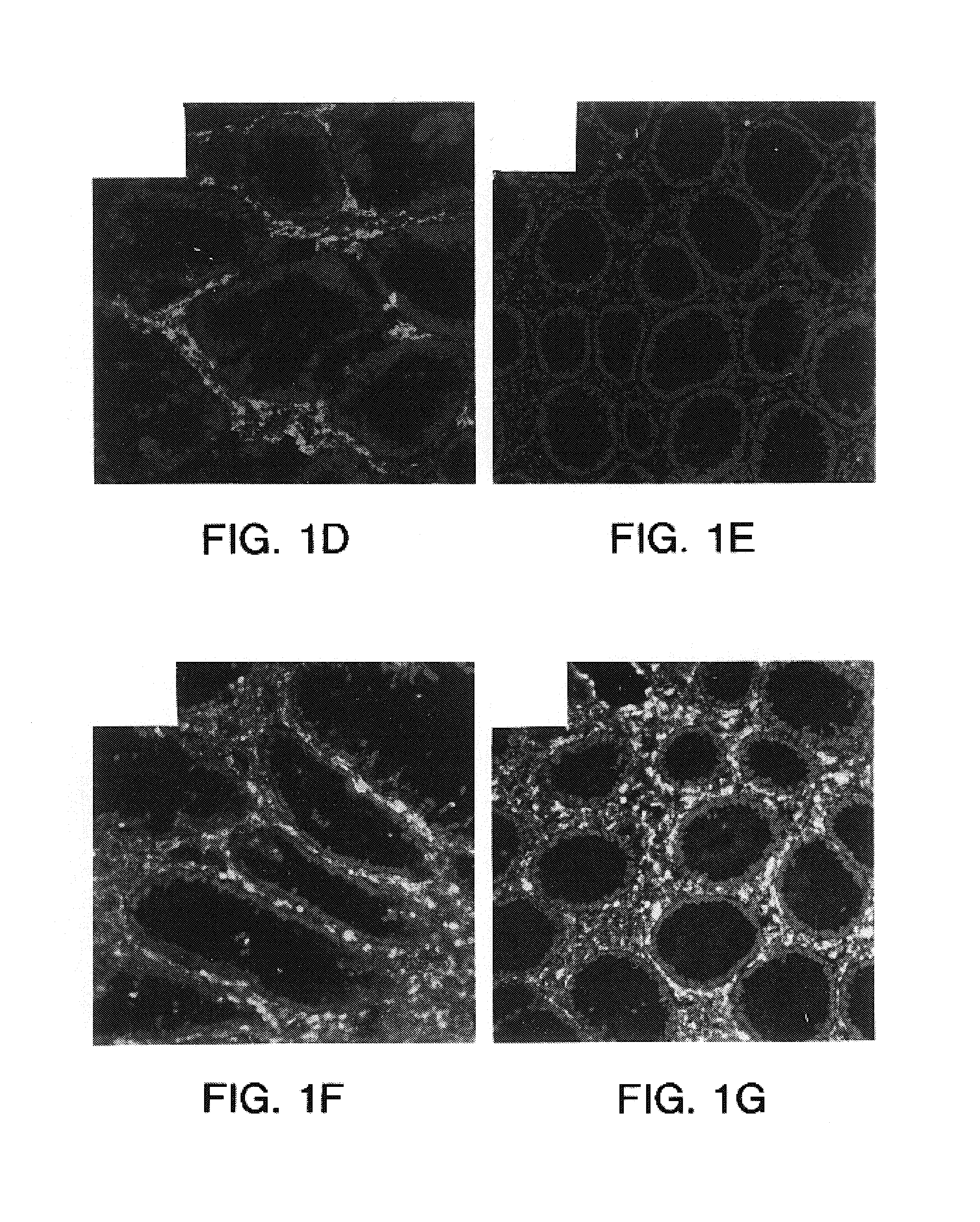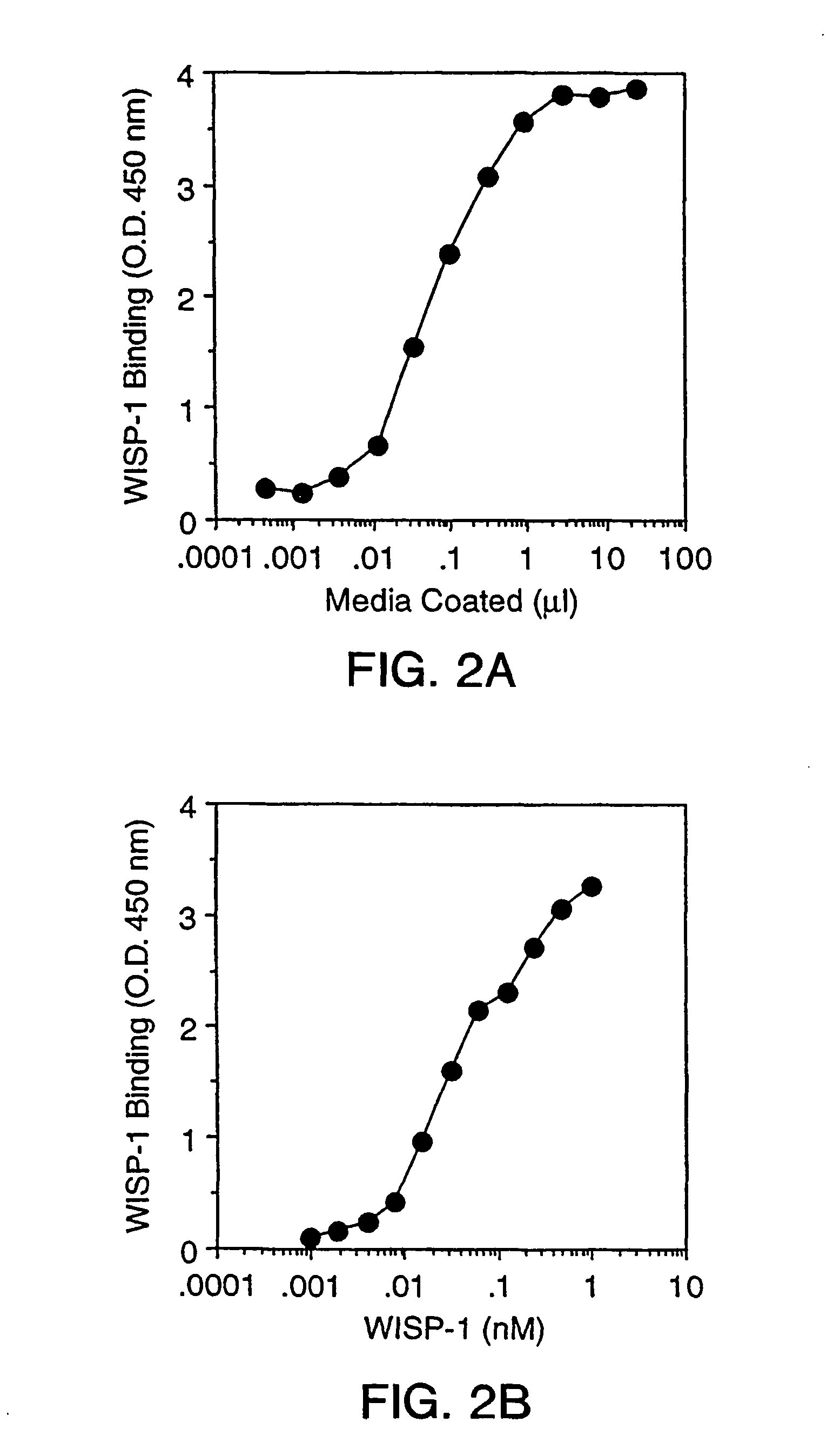Methods of treatment using wisp polypeptides
a technology of wisp polypeptides and polypeptides, which is applied in the direction of peptide/protein ingredients, peptide sources, applications, etc., to achieve the effect of stimulating or enhancing chondrocyte differentiation or proliferation, and facilitating activity
- Summary
- Abstract
- Description
- Claims
- Application Information
AI Technical Summary
Benefits of technology
Problems solved by technology
Method used
Image
Examples
example 1
[0160]In the assays described below, the following methods and materials were employed:
[0161]Materials: Chondroitin sulfate A from bovine trachea, chondroitin sulfate C from shark cartilage, hyaluronidase (EC 3.2.1.45) from bovine testes and chondroitinase AC II (EC 4.2.2.5) from Artherobacter aurenscens were purchased from Calbiochem (San Diego). Chondroitin sulfate B, heparin and heparan sulfate from porcine intestinal mucosa, decorin and biglycan from bovine articular cartilage, chondroitinase C, chondroitinase B and heparinase I (EC 4.2.2.7) from Flavobacterium hepanium were obtained from Sigma. Chondroitin sulfate D from shark cartilage and chondroitin sulfate E from squid cartilage were purchased from United States Biological (Swampscott, Mass.). Neuramimidase (EC 3.2.2.18) from Vibrio Cholera, chondroitinase ABC (EC 4.2.2.4), protease free from Proteus vulgaris, Complete EDTA-free protease inhibitors cocktail tablets and fatty acid ultra free BSA fraction V were purchased fro...
example 2
Adhesion of CHO Cells to WISP-1 and Other ECM Proteins
[0203]The following CHO cell lines (identified by ATCC number) were maintained in Ham-F12 / LGDMEM (50:50) containing 10% FBS:
[0204]
CHO-K1(CCL-61)CHO pgs A-745(CRL-2242; DO NOT synthesize proteoglycan)CHO pgs B-618(CRL-2241; DO NOT synthesize proteoglycan)CHO pgs D-677(CRL-2244; DO NOT synthesize haparan sulfate)CHO pgs E-606(CRL-2246; Synthesize an undersulfated heparansulfate)
Maxisorp plates were coated with 50 μl of mWISP-1-IgG (5 μg / ml) or BSA 3% (Fraction V, fatty acid ultra-free; Boehringer Mannheim) in solution in PBS at 4° C. overnight. The next day, the contents of the wells were aspirated and the wells blocked with 200 μl of PBS / 3% BSA for 1 hour at room temperature. The cells were taken up in PBS containing 2 mM EDTA, and the clumps were broken using a pipette and then centrifuged at 1000 rpm for 10 minutes. The supernatant was removed, and the cells were washed twice with serum free Ham-F12 / LGDMEM (50:50) containing 1% ...
example 3
Adhesion of Human Skin Fibroblasts to WISP-1 and Other ECM Proteins
[0209]Human Skin Fibroblasts (ATCC; CRL 7356) were maintained in Ham-F12 / LGDMEM (50:50) containing 10% FBS. Maxisorp plates were coated with 50 μl of the proteins (identified below) in solution in PBS at 4° C. overnight:
[0210]
Collagen I, Human(2 μg / ml)(Human; BioDesign)Collagen II, Human(2 μg / ml)(Human; BioDesign)mWISP-1-IgG(2 μg / ml)(see Example 1 above)BSA3%(Fraction V, fatty acid ultra-free;Boehringer Mannheim)
The next day, the content of the wells was aspirated and the wells be saturated with 200 μl of PBS / 3% BSA for 1 hour at room temperature. The cells were taken up in PBS containing 15 mM EDTA, and the clumps were broken up using a pipette. The cell suspension was filtered over a 45 μm filter and centrifuged at 1000 rpm for 10 minutes.
[0211]The supernatant was removed and the cells washed twice with serum free Ham-F12 / LGDMEM (50:50) containing 1% BSA. The cells were resuspended at 3×105 cells / ml with serum free...
PUM
| Property | Measurement | Unit |
|---|---|---|
| temperature | aaaaa | aaaaa |
| pH | aaaaa | aaaaa |
| temperature | aaaaa | aaaaa |
Abstract
Description
Claims
Application Information
 Login to View More
Login to View More - R&D
- Intellectual Property
- Life Sciences
- Materials
- Tech Scout
- Unparalleled Data Quality
- Higher Quality Content
- 60% Fewer Hallucinations
Browse by: Latest US Patents, China's latest patents, Technical Efficacy Thesaurus, Application Domain, Technology Topic, Popular Technical Reports.
© 2025 PatSnap. All rights reserved.Legal|Privacy policy|Modern Slavery Act Transparency Statement|Sitemap|About US| Contact US: help@patsnap.com



